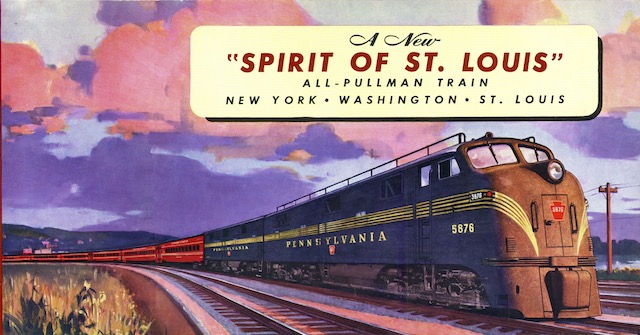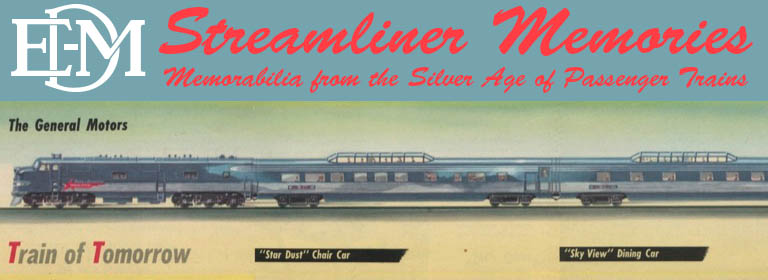When this brochure was published in 1949, the Pennsylvania had five trains a day between New York and St. Louis. Three had both coaches and sleepers: the American (which had through cars to Tulsa on the Frisco), the Penn-Texas (which had through cars to Tulsa San Antonio on the M-K-T and Missouri Pacific), and the St. Louisan. The route’s premiere trains were the all-coach Jeffersonian and the all-Pullman Spirit of St. Louis.
 Click image to download an 3.6-MB PDF of this brochure.
Click image to download an 3.6-MB PDF of this brochure.
This brochure (as well as the Liberty Limited and General brochures presented in the last two days) is filled with black-and-white drawings of car interiors. Oddly, one of the drawings in today’s brochure shows two men getting ready for bed in the bunk beds of a compartment while another shows two women ready for bed in the bunk beds of a bedroom, but none show a man and a women sleeping in the same room. Perhaps the suggestion of a heterosexual relationship, even within marriage, was just too controversial while homosexual relationships weren’t even worth considering.
 This ad from the April 1949 Pennsylvania timetable compares the five daily PRR trains between New York/Washington and St. Louis.
This ad from the April 1949 Pennsylvania timetable compares the five daily PRR trains between New York/Washington and St. Louis.
One of the black-and-white drawings in today’s brochure is signed Jerome Rozen, and while none of the drawings in the Liberty and General brochures are signed, they are all of the same style. Rosen was born in Chicago in 1895 and, after serving in the Great War, studied at the Art Institute of Chicago.
After graduating in 1921, he moved to New York City, where he made a living drawing covers for pulp magazines and, later, such magazines as Saturday Evening Post and Good Housekeeping. He made war posters during World War II and, after the war, illustrated ads for the Pennsylvania Railroad, Chesapeake & Ohio, and Shell Oil. Although he had been severely injured in an automobile accident in 1938, he managed to live to be 91, dying in 1987.
